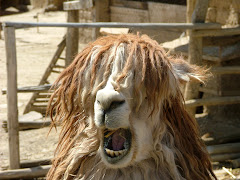

 Create Your Own
Create Your OwnBruner believed that the desire to learn and to undertake problem solving could be activated by devising problem activities in which students would explore alternative solutions. Based on this the teacher must pose a problem that would interest the students to solve. For this module, I have picked a lesson about what is going on in Darfur. Many education politicians are convinced there is genocide taking place and the United States should intervene. However, there are also many other politicians that do not think it is genocide. So this is the proposal to the students: Is what is happening in Darfur genocide?
Bruner felt it is imperative to structure the information and ideas in a very clear way so the students can easily understand it. Students must understand the concept of what genocide is. Bruner believed there were three ways information could be represented: symbolic, iconic or enactive. For my purposes I would use symbolic representation and show political cartoons and pictures of historical genocides. I would also show images of people in Darfur.
The lesson will be structured sequential. Bruner believes that students should be able to “grasp, transform and transfer” information. First, students will use a map to find where the Sudan and Darfur is located. They will go on to the world fact book online to find information about the region. Students will work in small groups and they do most of the discovering. As the lesson progresses thee information will become more difficult. Students will ultimately watch videos, read articles, view images, use the Internet to view voting history about Darfur. Students will then make a PowerPoint based upon their belief, genocide or not? Students will discover and test their own hypothesis.
Motivating the students throughout the process is another important part of Bruner’s discovery learning. Ultimately the goal is to have a classroom of intrinsically motivated students. However, as a teacher it is important to continually do whatever needs to be done to extrinsically motivate those students that need that little push.
David Ausubel believes that concepts and principles are presented and not discovered. The lesson on “Is There a Genocide In Darfur” would be presented very differently using Ausubel’s ideas of exposition.
First off the concept will be explained to the students. They will get a clear-cut definition of what genocide is. The teacher will give any vocabulary relating to this lesson to the students. Students will not “discover” learning.
The facts on Darfur will be carefully organized and complete in a student friendly, efficient manner. There will be graphic organizers with the most basic concept down to supporting and specific details. A Venn Diagram will be given to compare and contrast Darfur and the Holocaust. (Establishing Prior Knowledge)
Students then take information and make a PowerPoint on the Genocide in Darfur.
These lessons support the idea of transfer in many ways. The students are learning how to find information via Internet and print materials. Students are also taught different reading strategies throughout their careers. These strategies should be used whenever they can in or out of the classroom. For example, READS: Review headings, Examine boldface words, Ask questions and Do and Summarize, Using Charts, and assessing what they learned. Students are also encourage to used visual tools to help organized their thoughts and information. Concept Mapping, Webs, Venn Diagrams, Charts, Timelines, etc. They are students are given constant feedback by teacher on how to improve their work and strategies. Since the steps are sequential and broken down the students can remember the steps easily when presented with a real life problem. Of course the more practice they get the easier it will become to use strategies in an authentic manner


